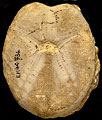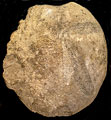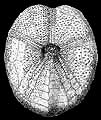The Echinoid Directory
Stomaporus Cotteau, 1888, p. 977
[ =Stomoporus Cotteau, 1890, p. 22 (lapsis cal.)]
| Diagnostic Features |
|
|---|---|
| Distribution | Eocene, Spain. |
| Name gender | masculine |
| Type | Stomaporus hispanicus Cotteau, 1888, p. 977, by original designation. |
| Species Included |
|
| Classification and/or Status |
|
| Remarks | The position of this taxon has been much debated, with Mortensen (1950) aligning it with Heterolampas and Fisher (1966) with the Brissidae. However, the clear development of adoral ambulacral grooves with greatly extended phyllodes, subcentral peristome and posteriorly expanding interambulacrum 5 on the oral surface clearly align it with Asterostoma. It differs from Asterostoma in having the periproct slightly supramarginal rather than inframarginal, and in having somewhat less extensive phyllodes (if Cotteau\'s drawings are to be believed). It also has a shallow frontal groove. Cotteau, G. 1888. Compte Rend. Acad. Sci. 107, p. 977. Cotteau, G. 1888. Bull. Soc. Geol. France (3) 16, p. 552. |






